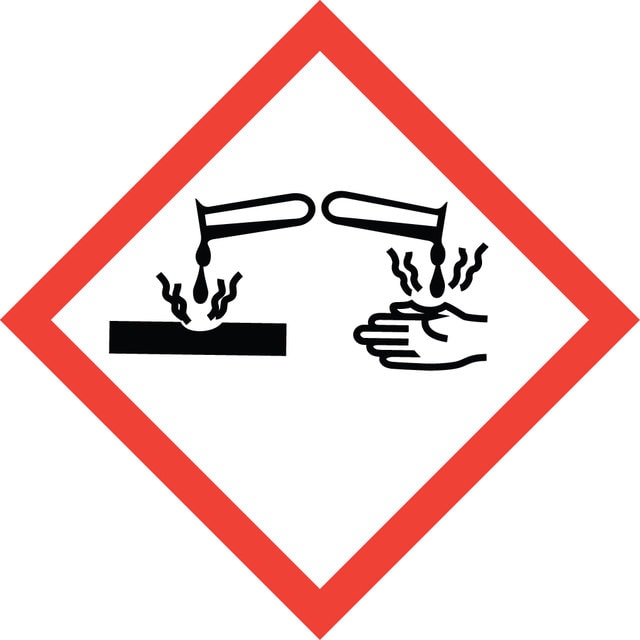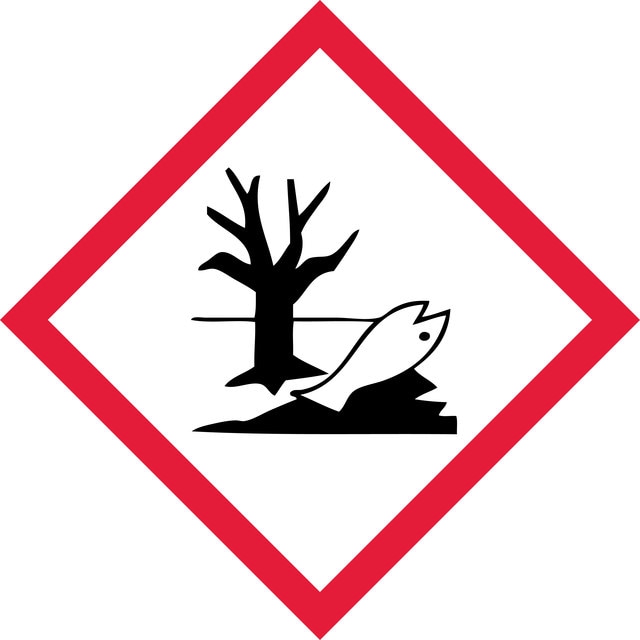If this product has an expiration or retest date, it will be shown on the Certificate of Analysis (COA, CofA). If there is no retest or expiration date listed on the product's COA, we do not have suitable stability data to determine a shelf life. For these products, the only date on the COA will be the release date; a retest, expiration, or use-by-date will not be displayed.
For all products, we recommend handling per defined conditions as printed in our product literature and website product descriptions. We recommend that products should be routinely inspected by customers to ensure they perform as expected.
For products without retest or expiration dates, our standard warranty of 1 year from the date of shipment is applicable.
For more information, please refer to the Product Dating Information document: https://www.sigmaaldrich.com/deepweb/assets/sigmaaldrich/marketing/global/documents/418/501/product-dating-information-06-25-mk.pdf
Select a Size
$67.80
$168.00
$963.00
About This Item
Skip To
grade
reagent grade
Quality Level
agency
suitable for SM 4500 - NH3
vapor pressure
23.3 hPa ( 20 °C)
form
liquid
composition
available chlorine, 10-15%
reaction suitability
reagent type: oxidant
greener alternative product characteristics
Safer Solvents and Auxiliaries
Learn more about the Principles of Green Chemistry.
sustainability
Greener Alternative Product
concentration
10-15% (chlorine by Na2S2O3, titration)
bp
111 °C
density
1.206 g/mL at 25 °C
greener alternative category
storage temp.
2-8°C
SMILES string
[Na+].[O-]Cl
InChI
1S/ClO.Na/c1-2;/q-1;+1
InChI key
SUKJFIGYRHOWBL-UHFFFAOYSA-N
Looking for similar products? Visit Product Comparison Guide
1 of 4
This Item | 239305 | 28-3100 | 28-3090 |
|---|---|---|---|
| grade reagent grade | grade reagent grade | grade CP | grade CP |
| form liquid | form liquid | form liquid | form liquid |
| storage temp. 2-8°C | storage temp. 2-8°C | storage temp. 15-25°C | storage temp. 15-25°C |
| Quality Level 200 | Quality Level 100 | Quality Level - | Quality Level - |
| density 1.206 g/mL at 25 °C | density 1.097 g/mL at 25 °C | density - | density - |
| agency suitable for SM 4500 - NH3 | agency suitable for SM 4500 - NH3 | agency - | agency - |
General description
Application
Towards greener solvents for the bleach oxidation of alcohols catalysed by stable N-oxy radicals
Disclaimer
signalword
Danger
hcodes
Hazard Classifications
Aquatic Acute 1 - Aquatic Chronic 2 - Eye Dam. 1 - Met. Corr. 1 - Skin Corr. 1B
supp_hazards
Storage Class
8B - Non-combustible corrosive hazardous materials
wgk_germany
WGK 2
flash_point_f
Not applicable
flash_point_c
Not applicable
Choose from one of the most recent versions:
Already Own This Product?
Find documentation for the products that you have recently purchased in the Document Library.
Articles
Overview on how to maintain proper cell culture laboratory safety including steps on performing lab risk assessments, surface disinfection, biohazard and waste removal. Free ECACC handbook download.
Protocols
Cell culture protocol for proper aseptic technique to maintain a sterile environment and to prevent cell culture contamination. Free ECACC handbook download.
Related Content
This page is intended to make it easier to find the consumables you need based on the analytical method you’re using. Methods included on this page come from the EPA, Standard Methods and ASTM.
-
How can I determine the shelf life / expiration / retest date of this product?
1 answer-
Helpful?
-
-
How is shipping temperature determined? And how is it related to the product storage temperature?
1 answer-
Products may be shipped at a different temperature than the recommended long-term storage temperature. If the product quality is sensitive to short-term exposure to conditions other than the recommended long-term storage, it will be shipped on wet or dry-ice. If the product quality is NOT affected by short-term exposure to conditions other than the recommended long-term storage, it will be shipped at ambient temperature. As shipping routes are configured for minimum transit times, shipping at ambient temperature helps control shipping costs for our customers. For more information, please refer to the Storage and Transport Conditions document: https://www.sigmaaldrich.com/deepweb/assets/sigmaaldrich/marketing/global/documents/316/622/storage-transport-conditions-mk.pdf
Helpful?
-
-
Please provide information on whether the 10-15% concentration of this solution is by weight/weight, volume/volume, or something else.
1 answer-
The chlorine concentration is reported as Weight/Weight (W/W) for this product.
Helpful?
-
-
How was the titration done for 425044, and how was the percent for the COA obtained?
1 answer-
The quality level of the product is 100, no information can be provided on the tests that are run on the COA.
Helpful?
-
-
Is this material %(W/V) or %(W/W) for the available chlorine titration.
1 answer-
It is % (W/W).
Helpful?
-
-
What is the Department of Transportation shipping information for this product?
1 answer-
Transportation information can be found in Section 14 of the product's (M)SDS.To access the shipping information for this material, use the link on the product detail page for the product.
Helpful?
-
-
How is available chlorine tested?
1 answer-
To analyze for available chlorine, a sample of sodium hypochlorite is added to a solution of potassium iodide in the presence of acid to liberate iodine. The liberated iodine is titrated with standardized sodium thiosulfate.
Helpful?
-
-
What is the definition of available chlorine?
1 answer-
Available chlorine is a measure of the bleaching power of a substance. Available chlorine is defined as chlorine capable of releasing an equivalent amount of atomic oxygen according to the following reaction equations.Cl2 + 2OH- --> OCl- + Cl- + H2O (eqn. 1) HOCl --> HCl + ½ O2 (eqn. 2)
Helpful?
-
Active Filters
Our team of scientists has experience in all areas of research including Life Science, Material Science, Chemical Synthesis, Chromatography, Analytical and many others.
Contact Technical Service

